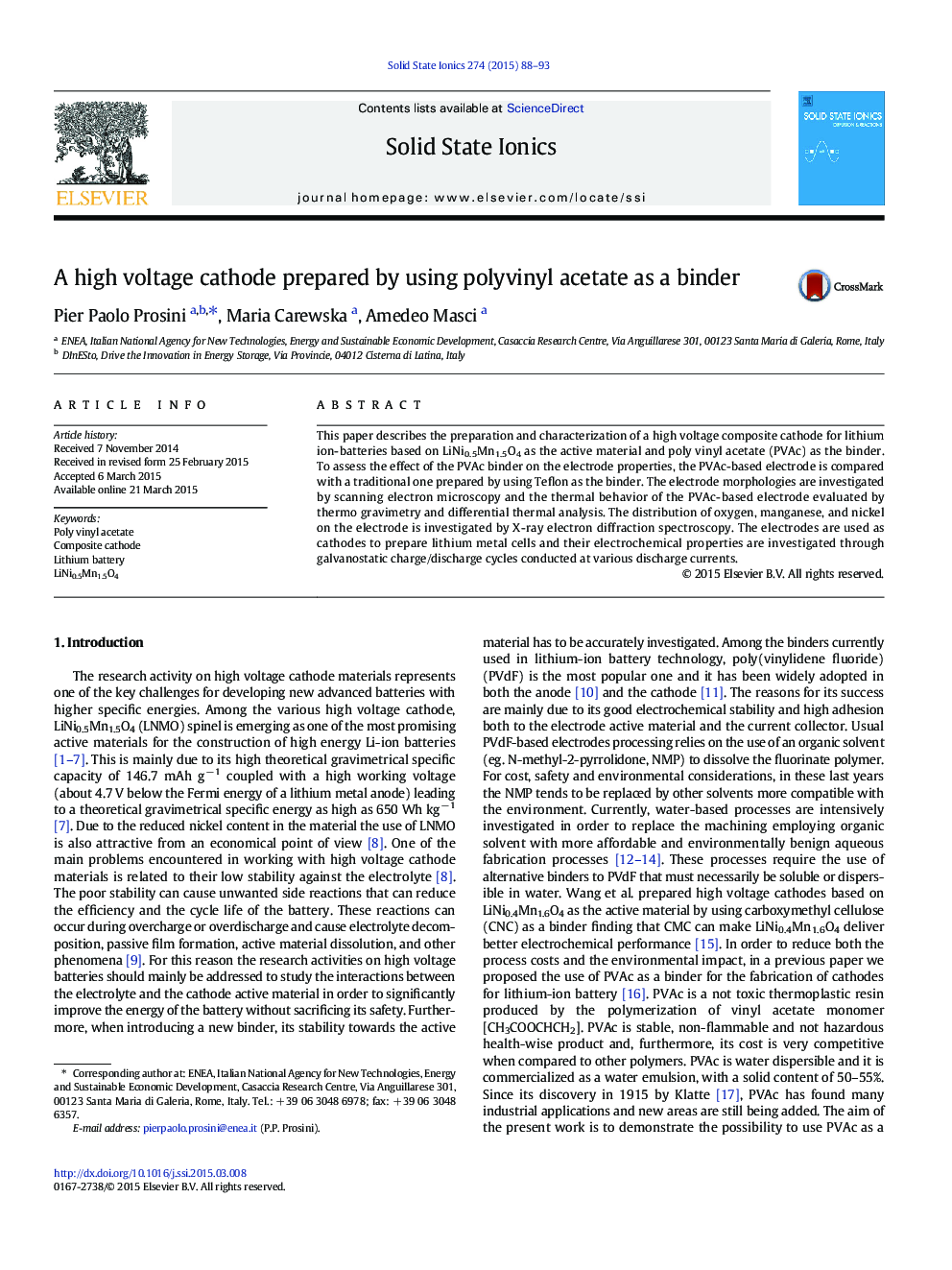| Article ID | Journal | Published Year | Pages | File Type |
|---|---|---|---|---|
| 1293622 | Solid State Ionics | 2015 | 6 Pages |
•Poly vinyl acetate (PVAc) was used as a binder for the manufacturing of cathodes.•The use of PVAc allows using water as process solvent.•LiNi0.5Mn1.5O4 was used as the cathode active material.•The cathodes were discharged at C/10 rate providing about 130 Ah kg− 1.•The capacity retained at 5C rate was about 75% of the C/10 capacity.
This paper describes the preparation and characterization of a high voltage composite cathode for lithium ion-batteries based on LiNi0.5Mn1.5O4 as the active material and poly vinyl acetate (PVAc) as the binder. To assess the effect of the PVAc binder on the electrode properties, the PVAc-based electrode is compared with a traditional one prepared by using Teflon as the binder. The electrode morphologies are investigated by scanning electron microscopy and the thermal behavior of the PVAc-based electrode evaluated by thermo gravimetry and differential thermal analysis. The distribution of oxygen, manganese, and nickel on the electrode is investigated by X-ray electron diffraction spectroscopy. The electrodes are used as cathodes to prepare lithium metal cells and their electrochemical properties are investigated through galvanostatic charge/discharge cycles conducted at various discharge currents.
